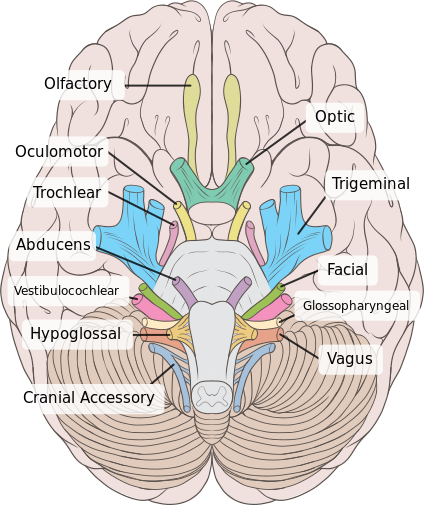Have you ever wondered what gives different cannabis strains their distinct aromas, flavors, and effects? Whether it’s citrus, berries, dessert, cheese, or skunk, cannabis aromas comes from a plethora of aroma molecules working in tandem. Today, cannabis aroma is broken into two different houses: terpenes and flavorants. We are just now beginning to learn more about the flavorant class, which is composed of many different sulfuric thiols, heterocycles, esters, alcohols, and more. Many of these compounds have been discovered in cannabis within the past year or two.
Our Aromatic Training Kit comprises of popular terpenes due to the amount of science we have around them and their effect types through aroma therapy and cannabis. They are fantastic markers for Interpening training and work the same without flavorants. Perceiving flavorants and or terpenes and where you feel them stimulating your TN is the secret behind mastering terpene aroma perception, and it’s precisely what the Aromatic Training Kit from Trichome Institute is designed to teach you. Learn this skill with our aroma kit, tools, book, or course; try it on actual cannabis flower and get ready to blow your friends away…
Why Aromatic Training Matters
Cannabis enthusiasts and professionals alike are drawn to the complexity of cannabis aromas. As a cannabis sommelier, your primary job is to guide people to the cannabis that suits their needs. However, with the vast variety of strains and the often unreliable strain names, how do you make an informed recommendation? The answer lies in interpening—the practice of interpreting the terpene profiles and flavorants of cannabis to predict its effects. The aromas steer the wheel between stimulating and sedative effects as the cannabinoids increase these effects. Aromatic training allows you to decode these terpene profiles by teaching you how to identify terpenes, where they stimulate your face, and what this means for the strain’s psychotropic effects.
By fine-tuning your ability to perceive terpenes with the help of your trigeminal nerve, you’ll gain an intuitive understanding of the plant. The goal is not just to smell a terpene, but to determine where you feel it in your face. This can reveal whether a strain has more sedative or uplifting qualities. Understanding these nuances takes your cannabis expertise to a whole new level.
The Role of the Trigeminal Nerve in Scent Perception
When it comes to smelling cannabis, most people focus on their olfactory system, which is governed by the first cranial nerve. However, to truly master terpene identification, you need to engage your fifth cranial nerve, known as the trigeminal nerve. This nerve is responsible for sensing sensations like tingling, pressure, and temperature in your face—think of the cooling sensation of menthol or the sharpness of pepper.
During terpene training, your trigeminal nerve helps you detect where on your face you feel the aroma. The nerve is divided into three branches: the maxillary branch (lower nose), the ophthalmic branch (upper nose and forehead), and the mandibular branch (lower jaw). Different terpenes activate different branches, which can give you clues about the cannabis strain’s effects. For example:
- Broad Leaf Marijuana (BLM) strains, with their earthy, musky aromas, often stimulate the maxillary zone (lower nose).
- Narrow Leaf Marijuana (NLM) strains, with bright, citrusy aromas, stimulate the ophthalmic zone (upper nose and forehead).
- Medium Leaf Marijuana (MLM) strains create a balanced stimulation across both zones.
Mastering this sixth sense takes practice, but once you can identify where each terpene “sits” in your face, you’ll have a powerful tool for understanding cannabis beyond lab reports and strain names.
The Science Behind Terpenes and the Trigeminal Nerve

Terpenes are more than just aromatic compounds—they play a significant role in how cannabis interacts with our bodies. Recent studies highlight the interaction between terpenes and the endocannabinoid system. A 2021 study in Frontiers in Pharmacology found that terpenes can modulate cannabinoid activity, meaning they can influence the overall effects of cannabis in unique ways and that two strains with similar THC levels can have completely different effects based on their terpene profiles.
In addition to their effects on the endocannabinoid system, terpenes are known to activate the trigeminal nerve. A 2023 study published in the Journal of Neuroscience explored how terpenes like pinene and limonene activate different branches of the trigeminal nerve, leading to the distinct sensations we associate with different cannabis strains . Undersis interaction is key to becoming proficient in aromatic training.
Getting Started with Your Aromatic Training Kit
Trichome Institute’s Aromatic Training Kit includes a variety of terpenes that help you master the art of interpening. Let’s dive into how you can use these terpenes to engage your trigeminal nerve and unlock new levels of aroma perception:
- D-Limonene: Start by inhaling gently. You’ll likely feel this terpene in the middle of your nose, but it quickly rises into the ophthalmic zone (upper nose). This is a key terpene in Narrow Leaf Marijuana (NLM) strains, which tend to be energizing and uplifting.
- Alpha-Pinene: This terpene offers a similar experience to limonene, with a sharp, refreshing aroma. You’ll feel it high up in your nose, signaling another NLM terpene that can help with focus and mental clarity.
- Myrcene: Known for its sedative effects, myrcene is typically associated with Broad Leaf Marijuana (BLM) strains. You’ll feel this earthy, musky terpene low in your nose, near the maxillary zone.
- Linalool: This floral terpene is unique in that it stimulates both the high and low zones of your nose. You’ll feel it in the BLM region (low) but can also detect subtle sensations higher up.
- Beta-Caryophyllene: Spicy and complex, this terpene engages both zones but has a dominant effect in the maxillary zone.
With each terpene, focus on where you feel the stimulation in your face. Does it sit low in your nose, high between your eyes, or somewhere in between? By training your trigeminal nerve, you’ll develop a memory of these sensations, helping you interpen cannabis strains with ease.
Tips for Effective Aromatic Training
- Create a distraction-free environment: Practice indoors and in a quiet space, away from strong smells like perfumes or cooking. This will help you focus solely on the terpenes.
- Use coffee as a palate cleanser: In between smelling different terpenes, inhale the aroma of freshly ground coffee to reset your nose.
- Don’t rush: Scent perception is a skill that takes time. Give yourself moments to pause and reflect on the sensations you feel.
- Start slow: Use gentle inhalations at first to get a sense of where the aroma stimulates your face. Once you’ve identified the zones, you can experiment with faster and deeper inhales to further engage your trigeminal nerve.
The Science of Terpenes and Their Role in the “Entourage Effect”
The “entourage effect” is a well-regarded concept in cannabis science, describing how terpenes and cannabinoids work synergistically to create a spectrum of effects that go beyond what each compound can produce alone. Recent studies reveal that terpenes may interact with cannabinoids like THC and CBD to enhance or modify their effects, potentially offering more targeted therapeutic benefits. For instance, a 2020 study published in Frontiers in Pharmacology highlighted how terpenes such as myrcene and beta-caryophyllene may amplify the calming effects of CBD or moderate the intensity of THC, thus influencing a user’s experience based on the terpene profile of the strain. These findings underscore the importance of understanding terpenes: they aren’t just responsible for the aroma but play a crucial role in determining a strain’s holistic effects. When trained to recognize terpene profiles, cannabis users can better tailor their choices to meet specific needs, from stress relief to enhancing focus. Aromatic training, therefore, isn’t just about sensory experience but about empowering users with knowledge for more effective and personalized cannabis use.
Conclusion: Elevate Your Cannabis Experience
By engaging your trigeminal nerve and honing your aromatic perception skills, you’ll unlock new levels of understanding when it comes to cannabis. Trichome Institute’s Aromatic Training Kit offers a hands-on, interactive way to train your senses and deepen your appreciation for the complexity of terpenes. Whether you’re a cannabis sommelier, enthusiast, or someone simply curious about the plant, this guide provides you with the tools to master the art of interpening.
The science behind terpenes and their effects on our body is continually evolving, and incorporating this knowledge into your cannabis experience is the next step in becoming a true connoisseur. So, take a deep breath, engage your trigeminal nerve, and let the terpenes guide you on a sensory journey like no other!




